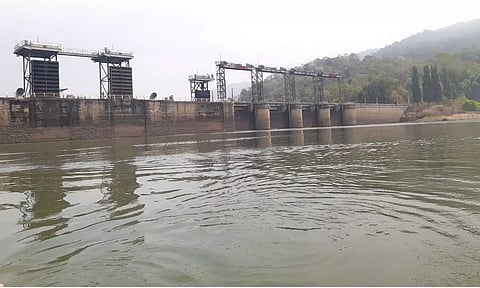

COIMBATORE: The Pillur dam in Coimbatore with an existing storage of around 65 feet as against its full level of 100 feet may look comfortable.
Yet, going by such water level projections may be rather deceitful as pumping water from the dam’s existing storage for some major drinking water projects in Coimbatore and as well as Tirupur Corporation is turning out to be difficult.
The reason is officials say the water level in the dam should be maintained at 72 feet and above to draw water from the dam as large portions of the reservoir have now been accumulated with silt.
Unable to draw water, Coimbatore is staring at the risk of facing a drinking water shortage. The dam’s water storage level has gone down to such levels after a similar scenario in 2016.
“Expert teams are exploring the possibility of removing silt accumulated in large quantities in the dam. Under current circumstances, there is no place to dump silt, if scooped out in large quantities from the dam. Even if dredged, the silt has to be released into the river, which may block the water passageway. Seemingly, the dam wasn’t desilted before ever since its commissioning in 1966. The ongoing study itself is a long process and cannot be executed any time soon. Because of silt accumulation, the dam could not be utilised to its full capacity,” said an official of Tangedco.
Another Tangedco official said experts from Dam Rehabilitation and Improvement Project (DRIP) are studying the possibility of removing the silt from the dam and have embarked on a project which will be funded by the World Bank.
Even though a desilting committee comprising the chief engineer, Tangedco, revenue department sleuths, and forest department was constituted several years ago, things did not progress then as expected.
Coimbatore Corporation Commissioner Sivaguru Prabhakaran said Tangedco has been alerted on the issue of dropping water level in Pillur dam and things will be sorted out soon.
“As we have started to receive water from the newly implemented Pillur III, we could manage with supplying water to the city. As of now, there will not be any shortage as water withdrawal capacity from Siruvani dam has also improved,” he said.
Once Tangedco commissions hydropower generation in the group of dams in the Nilgiris, water will automatically start flowing into Pillur dam.
“This issue has been taken up with Tangedco and I am closely monitoring the situation. The desilting of the dam should be carried out only by the Water Resources Department (WRD),” the commissioner said.
Despite hitches in Pillur I and Pillur II projects, the trial phase of Pillur III project is underway and certain gaps in its execution are being attended to for the project to take off in full swing.
Of the 236.3 MLD of water sourced from various projects by Coimbatore Corporation, over 126.9 MLD (Million Litres per day) of water is drawn from the dam for Pillur I and Pillur II projects.
Moreover, water for seven other major projects including Pillur III project, which is now on a trial run, is drawn from the Bhavani River.
Low water storage in the Nilgiris hinders hydropower generation
To overcome water shortage, the Tamil Nadu Water Supply and Drainage Board (TWAD) authorities have insisted Tangedco take up the generation of hydropower in reservoirs in the Nilgiris to allow inflow into Pillur dam.
However, the storage levels in hydro reservoirs in the Nilgiris have also gone down drastically thereby limiting the scope for continuous hydro power generation.
Attributing the poor storage in the reservoirs in the Nilgiris to scanty rains, Tangedco officials lamented that the current scenario has gone so pathetic that there is no water in the dams even for hydropower generation.
“Still, given the immediate requirement for water in Pillur dam, the hydropower generation in the group of dams comprising Pykara and Kundah in the Nilgiris is likely to be operated for minimum hours to ensure water flows downstream into the Pillur reservoir. The generation of hydropower was kept bare minimum to avoid drying up of the reservoirs in the Nilgiris during peak summer,” said a Tangedco official.
The hydro stations in the group of dams in the Nilgiris have a capacity of 833 MW and they have attained a peak generation of up to 690 MW.
As against the State’s total hydel storage of 2,439 MU (million units), the Nilgiris Group comprising Pykara and Kundah reservoirs alone have a combined storage of 1,523 MU.
However, the storage in the Nilgiris stood at a drastic low of around 160.813 MU recently as against 713.998 MU during the same period last year. The Pillur dam also generates 50 MW of power through its two hydropower stations.